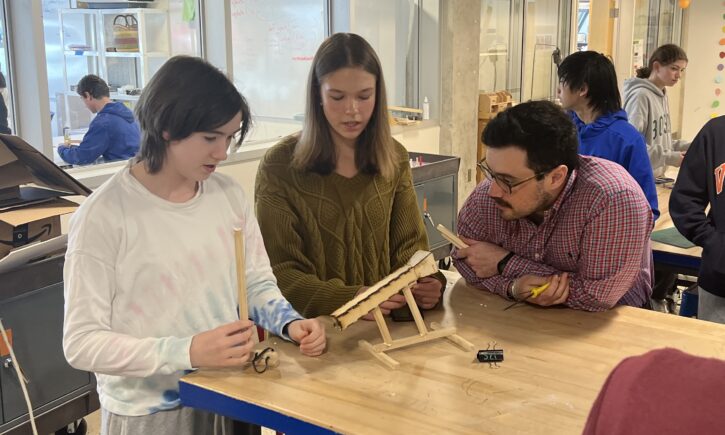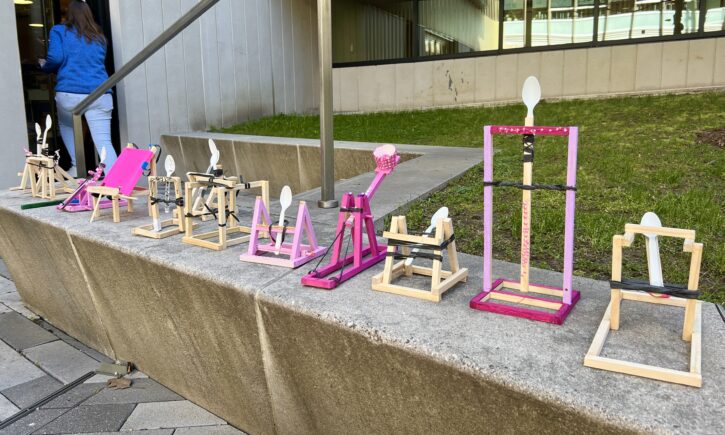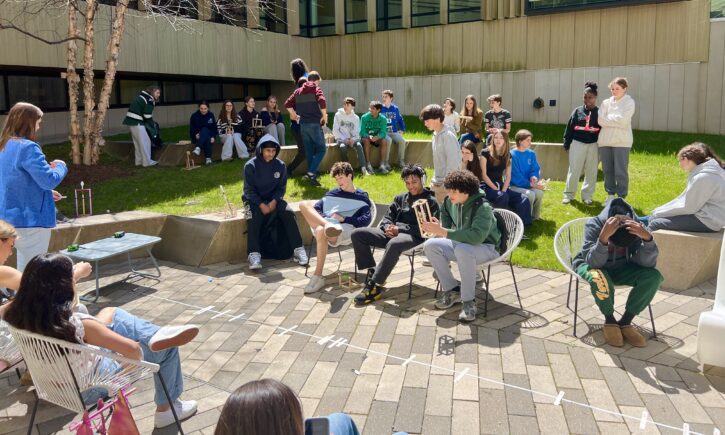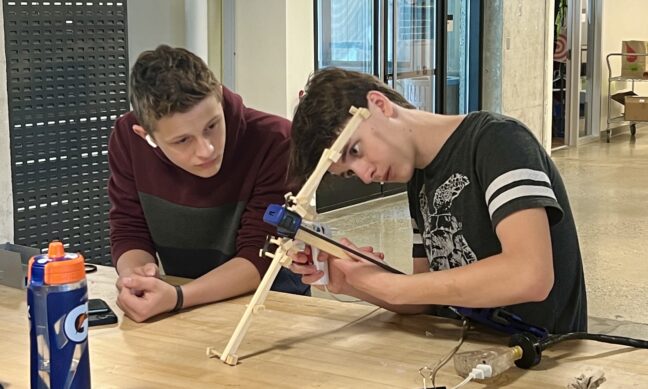Class: Physics Foundations
Grade: 9
Teachers: Sam Coughlin, Drew Zachry
Students in Physics Foundations created and tested marshmallow launchers in a design challenge centered around exploring themes of energy. The assignment tasked students with getting creative on the Design Level by conceptualizing, building, and testing their own designs. A celebratory “launch day” was held at the end of the project, with each team testing their creations in a friendly competition.
The first unit of physics this term is about energy, specifically types of energy, conservation of energy, and energy loss. After learning the physics ideas in the unit, students apply what they learn to build a marshmallow launcher and analyze the energy at different parts of their marshmallow’s launch path.
-Sam Coughlin, Upper School Science

Students started the design process by brainstorming, blueprinting, and becoming familiar with the material and time constraints of the assignment. Ms. Coughlin and Mr. Zachry held class on the D-Level, giving students easy access to the plethora of tools that would be necessary in constructing their designs. “Starting out, coming up with a good design to actually make a marshmallow launch was tricky,” student Phoebe Stoesser ’27 shared. “I needed to find a design that could work but would also be doable with the time we were given.”

Iteration was a major component of the assignment, with students actively revising their plans throughout the process. For some, overly ambitious designs warranted simplifying to overcome time constraints. For others, testing their designs revealed issues they had not considered during the blueprinting process. “Many [students] did not plan for strength,” Mr. Zachry says. “Only after their designs broke did they modify to add a frame or support braces.” Changes in materials were also common, with several students opting to 3D-print or lasercut pieces to finish their launchers.
I hope students will take away a sense of how important it is to plan out your designs before you start cutting – measure twice, cut once!
-Morgan Muschamp, Engineering and R+D Team

On launch day, each class convened in the courtyard to test their marshmallow launchers in a friendly competition. No two launcher designs were the same, showcasing the unique approaches each team took during the design process; some opted for a traditional catapult design, while others engineered slingshots. After launching, students recorded how far their marshmallows traveled and documented the functionality of their devices. The teams that launched the farthest won!
We set up little moments like this with the projects because if we (the teachers) are the only ones who ever see what they have accomplished, it isn’t as meaningful.
-Drew Zachry, Upper School Science
The marshmallow launcher assignment demonstrated to students how concepts from class can be leveraged to bring any idea they may have to life. Similarly, it exemplified the importance of blueprinting, testing, and refining ideas throughout the design process. “My biggest takeaway from the project was perseverance,” Phoebe Stoesser ’27 mentions. “You have to keep trying, even if things fall apart and don’t work out the way you want them to.”
More about this course: The Physics Foundations course serves as a student’s first introduction to science in the upper school. This initial term of 9th-grade physics familiarizes students with essential scientific skills and concepts through collaborative investigations and design tasks. Emphasizing problem-solving, teamwork, experimental methods, data analysis, and clear communication, students engage in hands-on activities to understand core principles of kinematics and energy.

